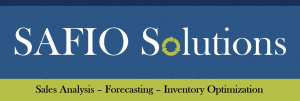The key to forecasting improvement starts with clean and organized data to get the best analysis possible for accurate and consistent decision making. In many cases, the quality of the data is often the difference between success and failure. And every company has “dirty” data, at least to some degree. But what is dirty data? It is a database record that contains errors, which might include spelling discrepancies, duplicate records, incomplete or inaccurate data, and data that is inconsistent across records. And how serious is it? Consider this: The Data Warehousing Institute (TDWI) estimates that dirty data costs companies over $600 BILLION each year!
Data integrity has a huge impact on forecasting improvement because the information contained in the database is typically used to analyze a business and provide forecasting. If the data is not clean and contains inaccuracies or duplications, the analysis will be flawed and therefore the forecasting will be inaccurate. This can have a great effect on your bottom line! In fact, studies have shown that dirty data costs companies an average of 12% of their revenue each year! No one wants that, so what do you do?
TIPS TO IMPROVE THE INTEGRITY OF YOUR DATA
- Ensure that all employees understand the importance of clean data and its uses. Data integrity may be compromised when new products are set up or when a sale occurs. By ensuring the data entry is complete and accurate, insights can be gleaned from the data, like analysis on product selling features and customer locations which leads to forecasting improvement.
- Set up alerts to notify users when data entry looks suspect. For example, a user could be notified if a field is left blank, or if an entry is spelled differently from entries already in the system, like “SM” instead of “Small” (the SM entry would cause that item to be excluded from analysis of the “Small” group which renders the analysis inaccurate).
- Dedicate resources to maintaining data integrity. Data cleansing may take some time, depending on the current condition of the database, but the time spent cleaning it up will be worth the forecasting improvement. Businesses may also want to consider having an outside firm help them clean their data and advise them on practices that could help them get the most benefits from their data.
EXAMPLES OF BENEFITS OF CLEAN DATA
Clean data is the foundation for good sales analysis and forecasting improvement – and the benefits are far-reaching. Just a few examples of the benefits of clean data include:
- The ability to analyze sales based on different selling features of products. With complete and accurate data, businesses can determine the best-selling colors, sizes, or materials and determine what new products to sell.
- The ability to segment marketing campaigns based on customer and product attributes. For example, one product feature may sell well in the Southwest while another feature only sells in the Northeast.
- By ensuring there are no duplicate SKUs, businesses can maintain data integrity such as sales and inventory levels. This contributes to the profitability of a business by being able to forecast sales properly and not carrying excess inventory.
For forecasting improvement, quality analysis can only be conducted if the data that is being used is complete, accurate and clean. Otherwise, it’s “garbage in, garbage out.” While maintaining clean data does take diligence and effort, the benefits realized can add significantly to the bottom line.
For more information about the importance of clean data for forecasting improvement, contact SAFIO Solutions. We’d be happy to answer your questions about clean data or help you clean and organize your data so you can reap the benefits of great analysis and forecasting improvement!




